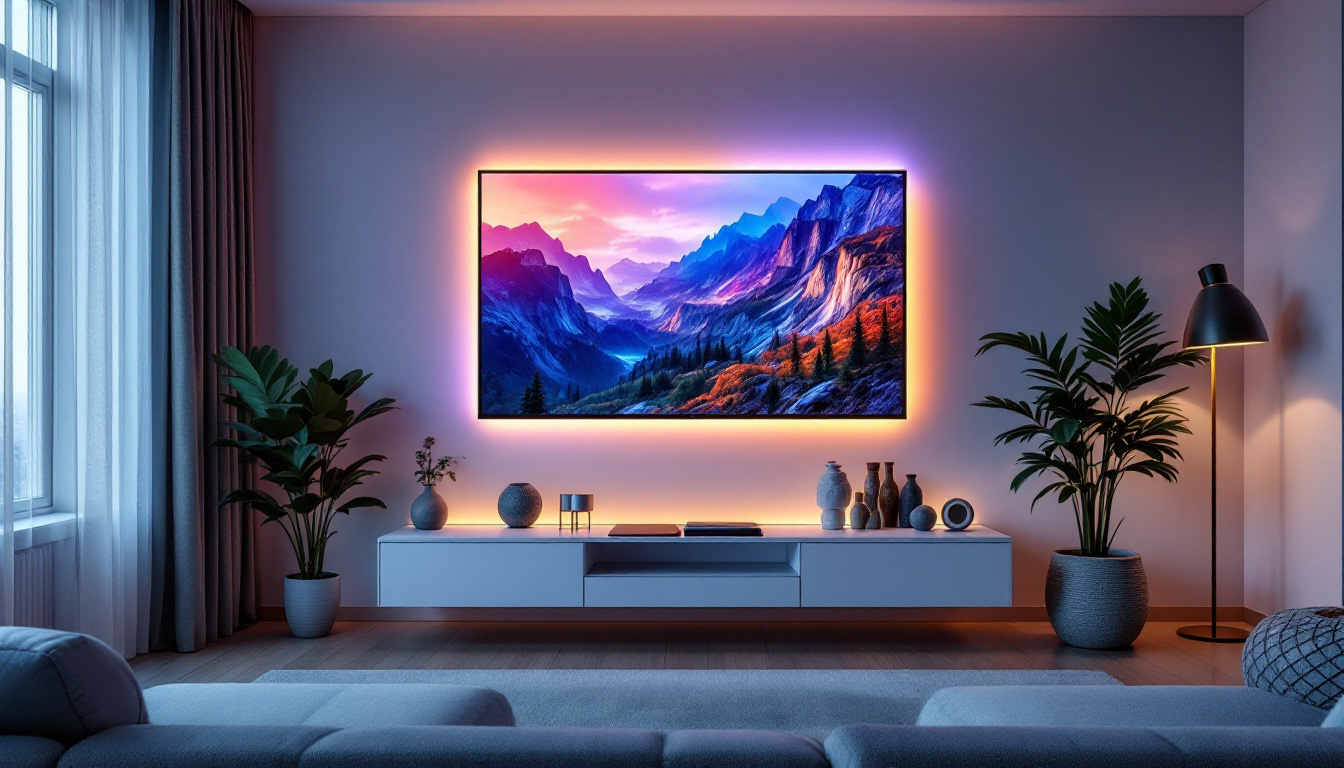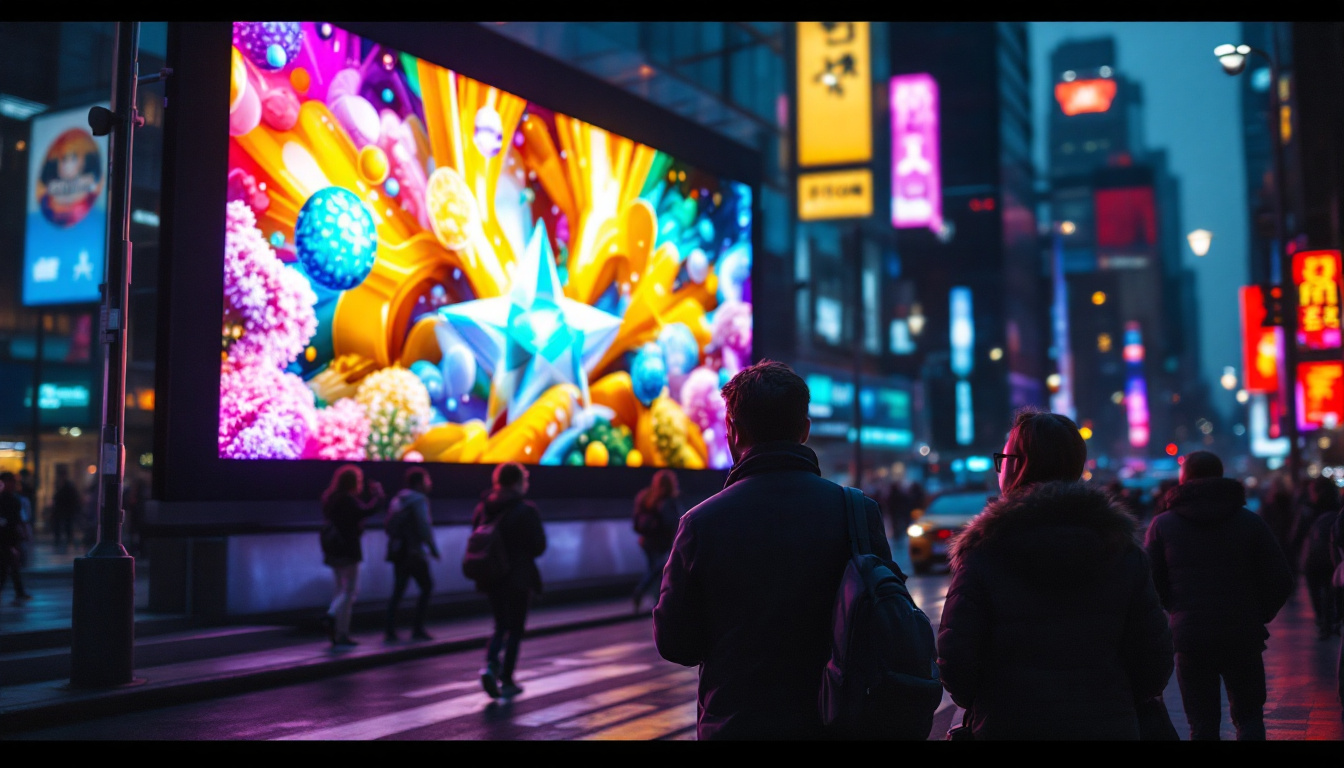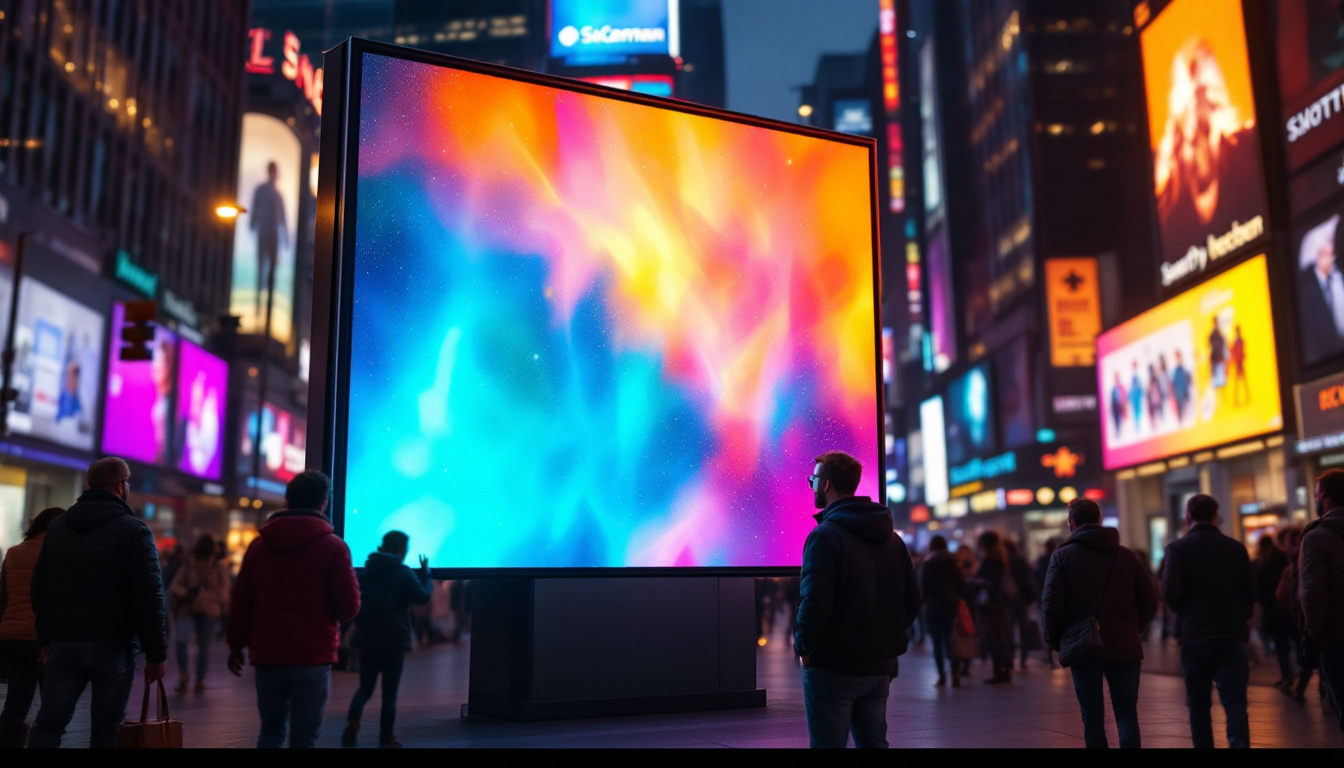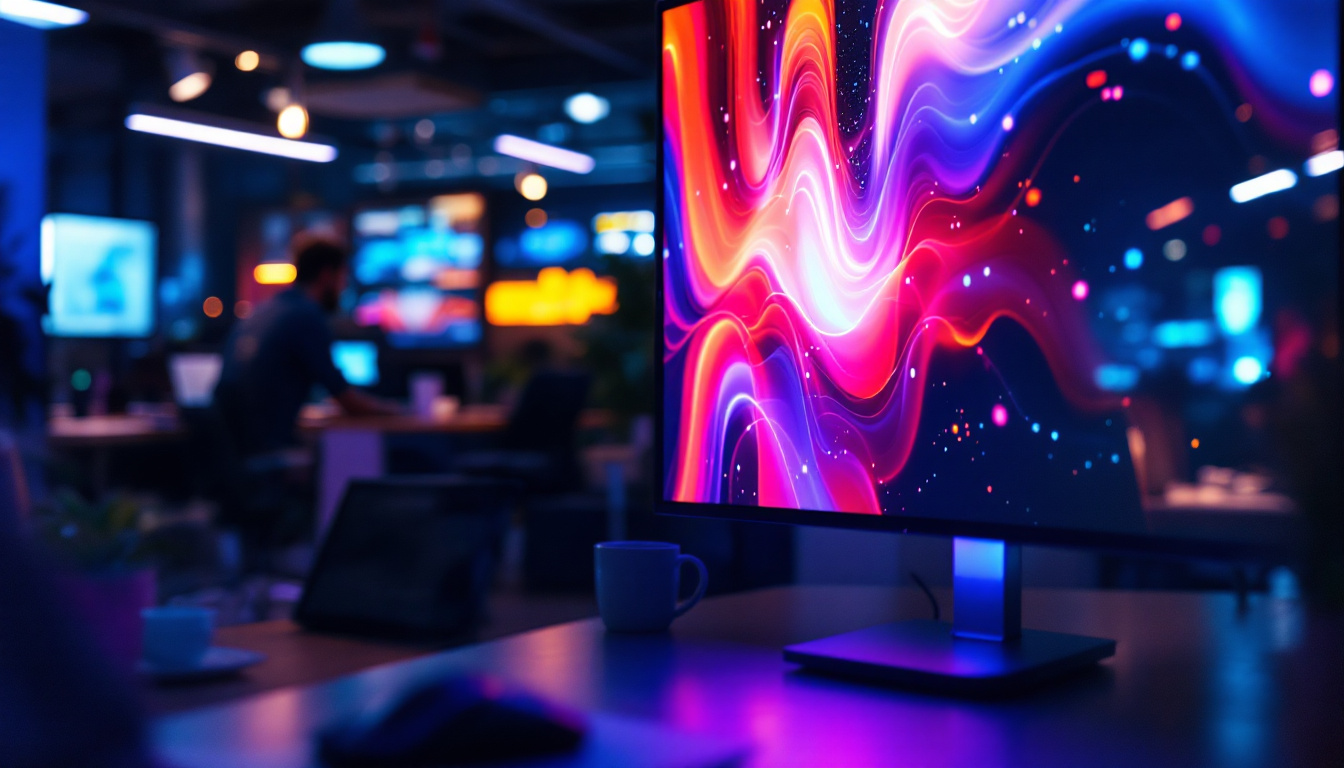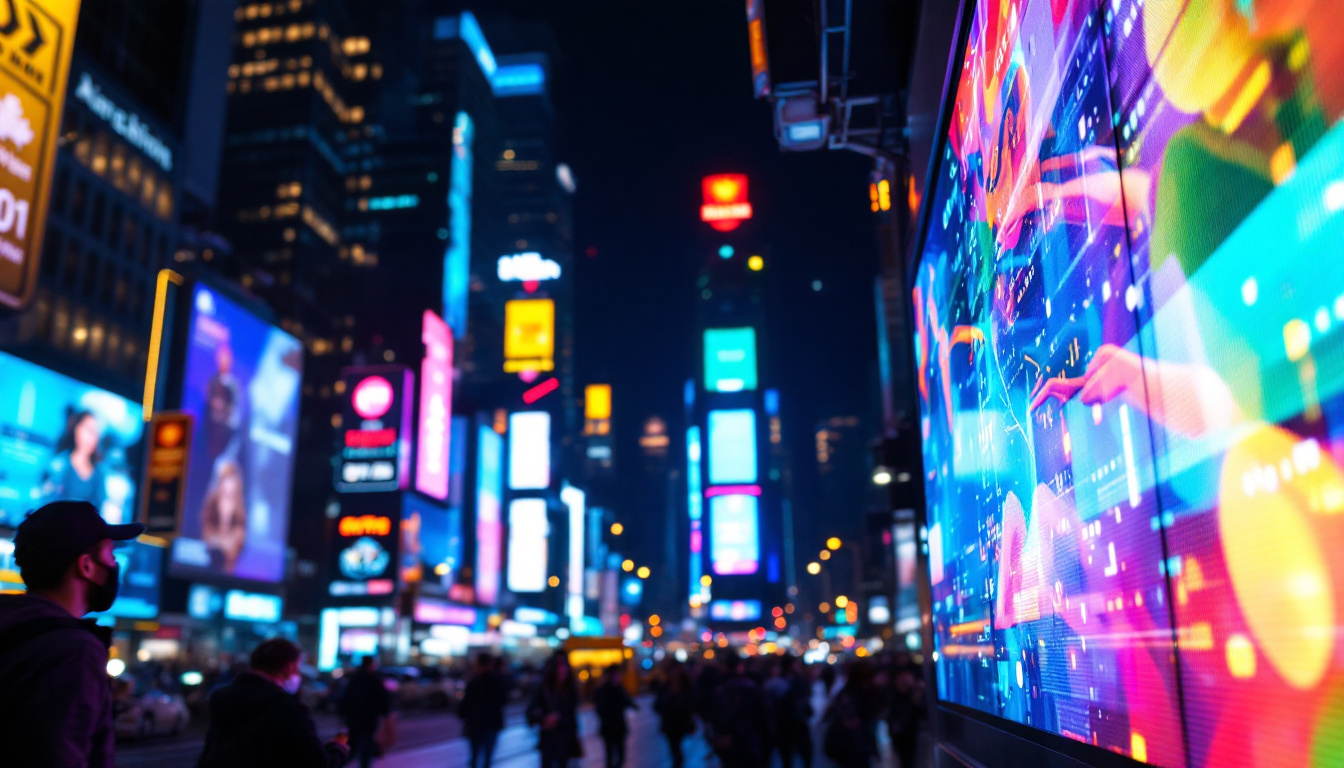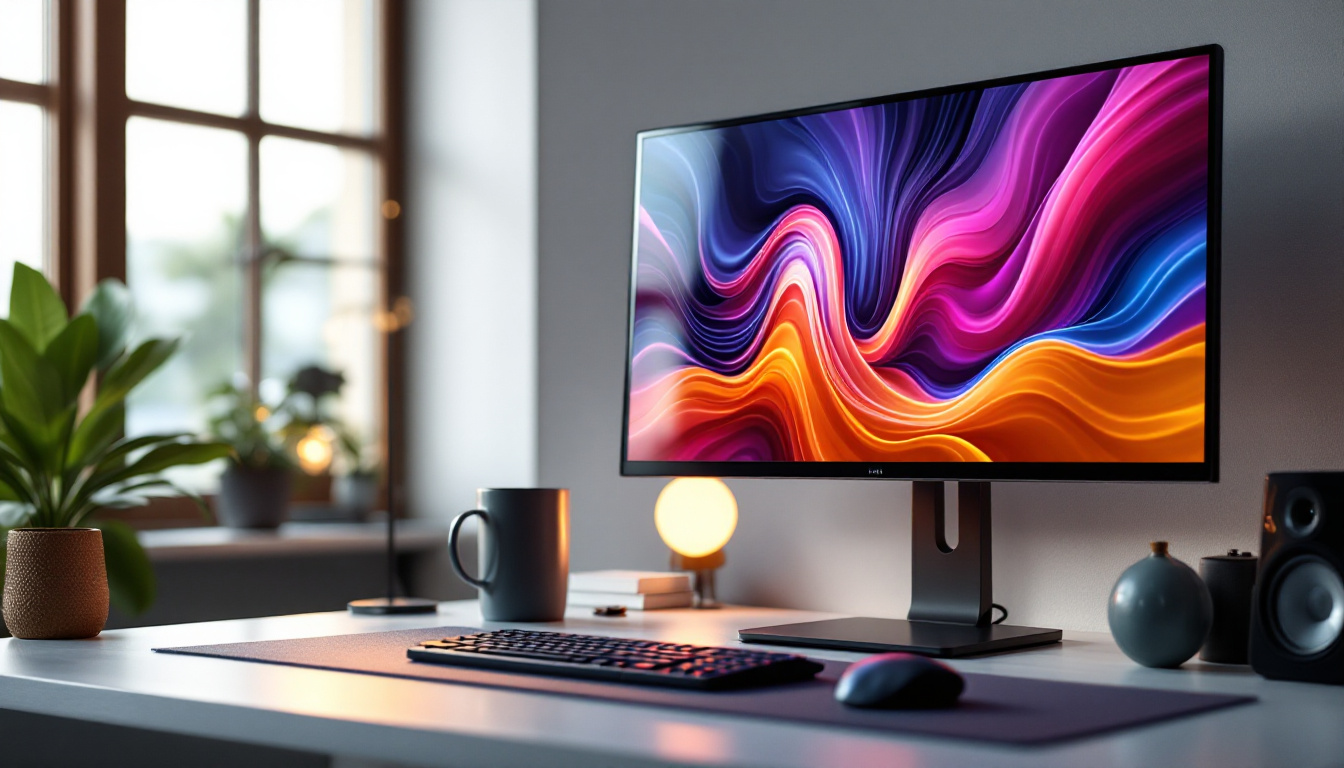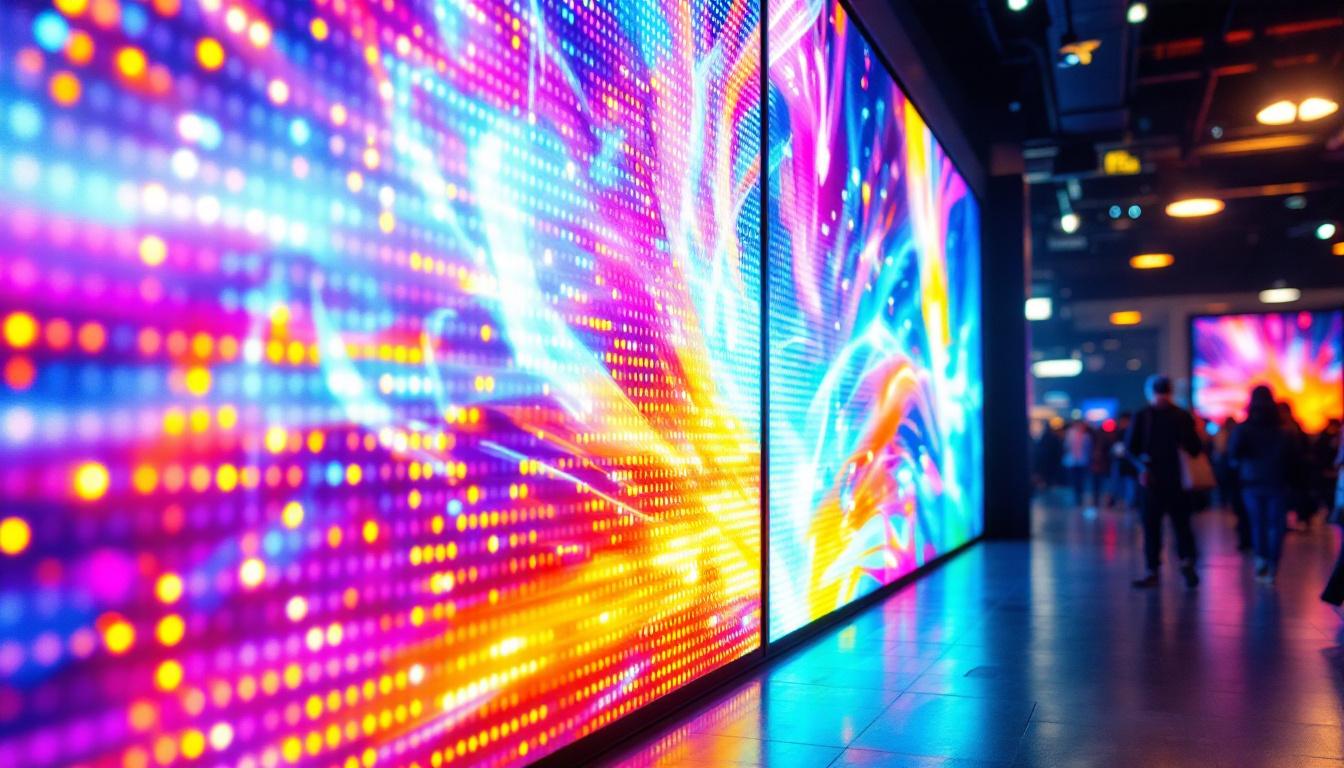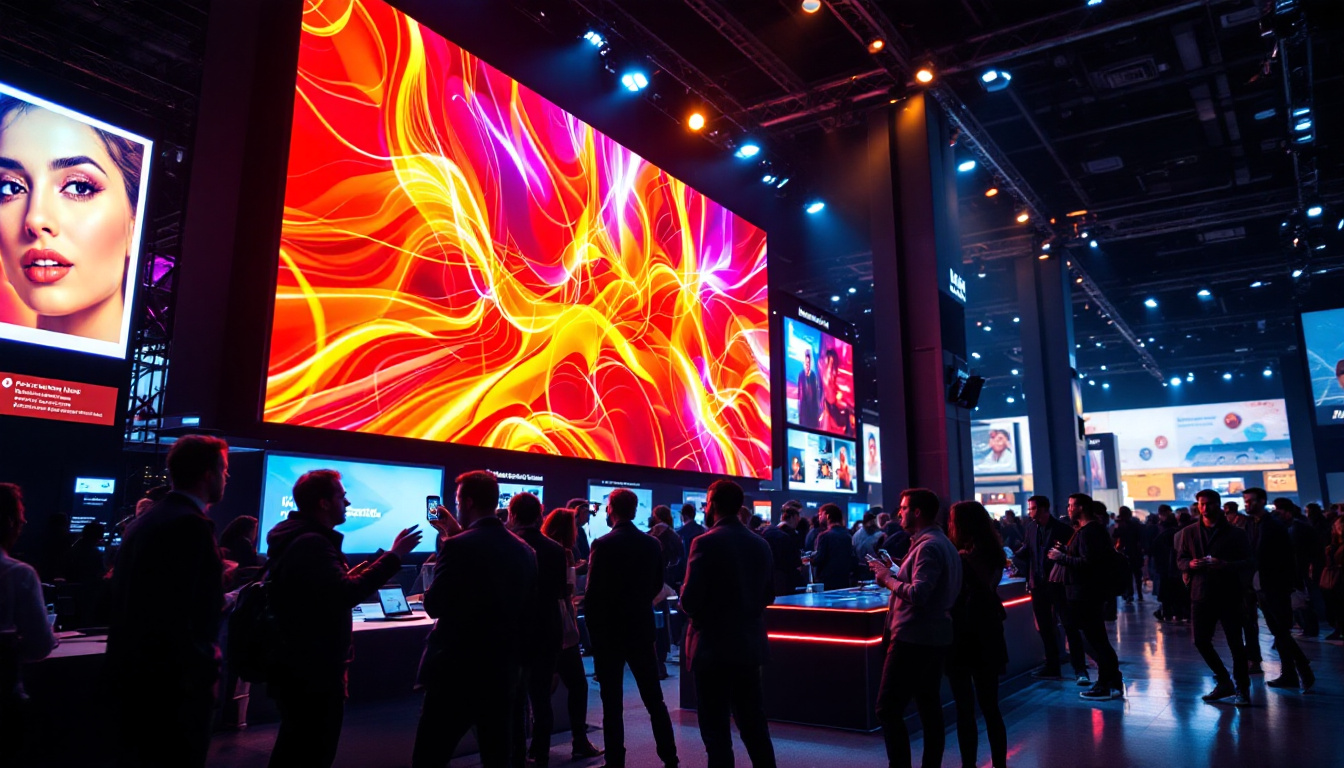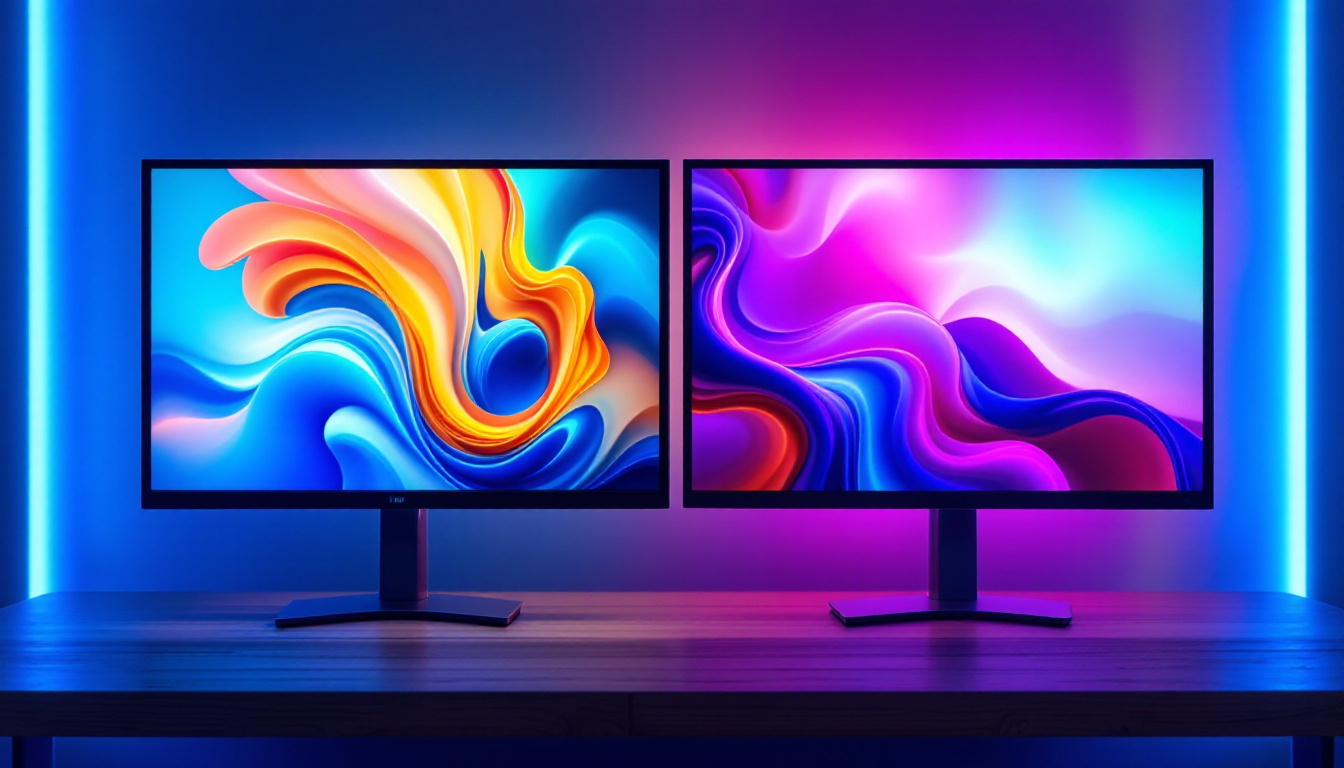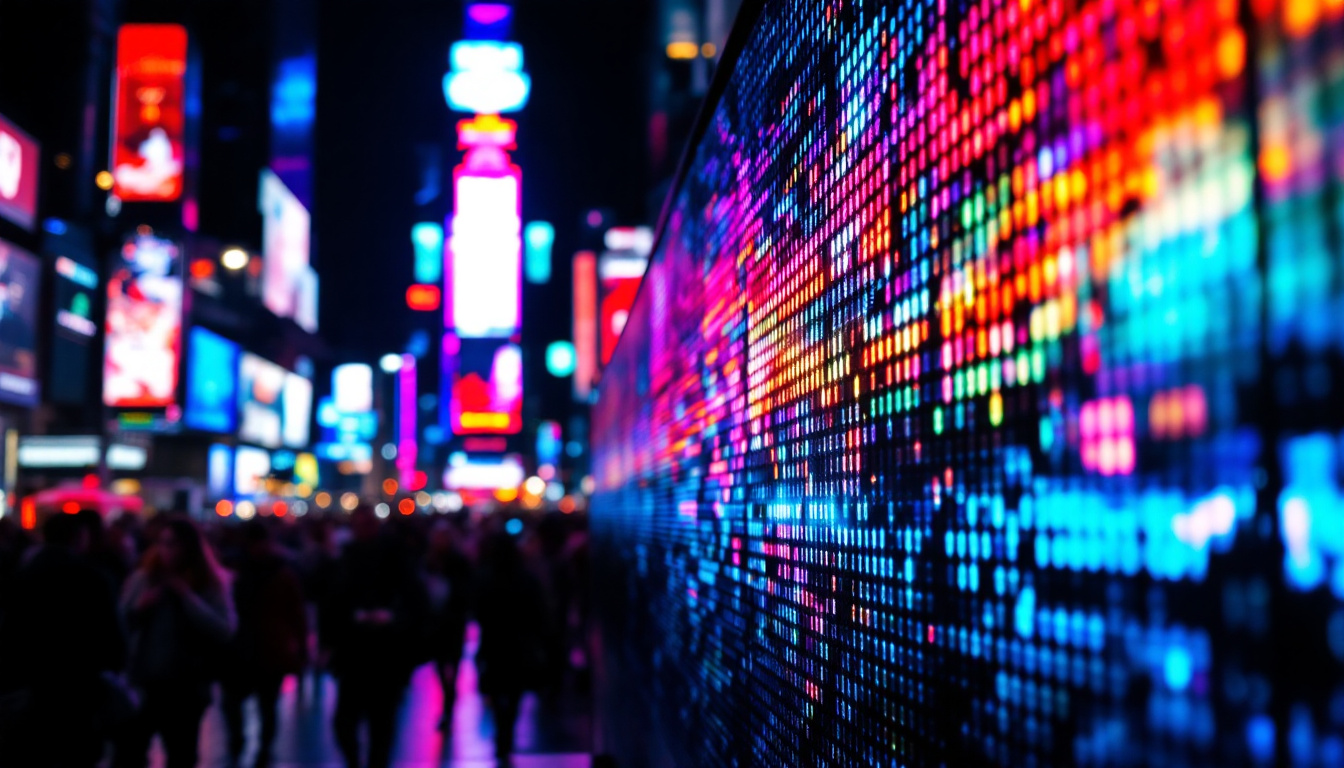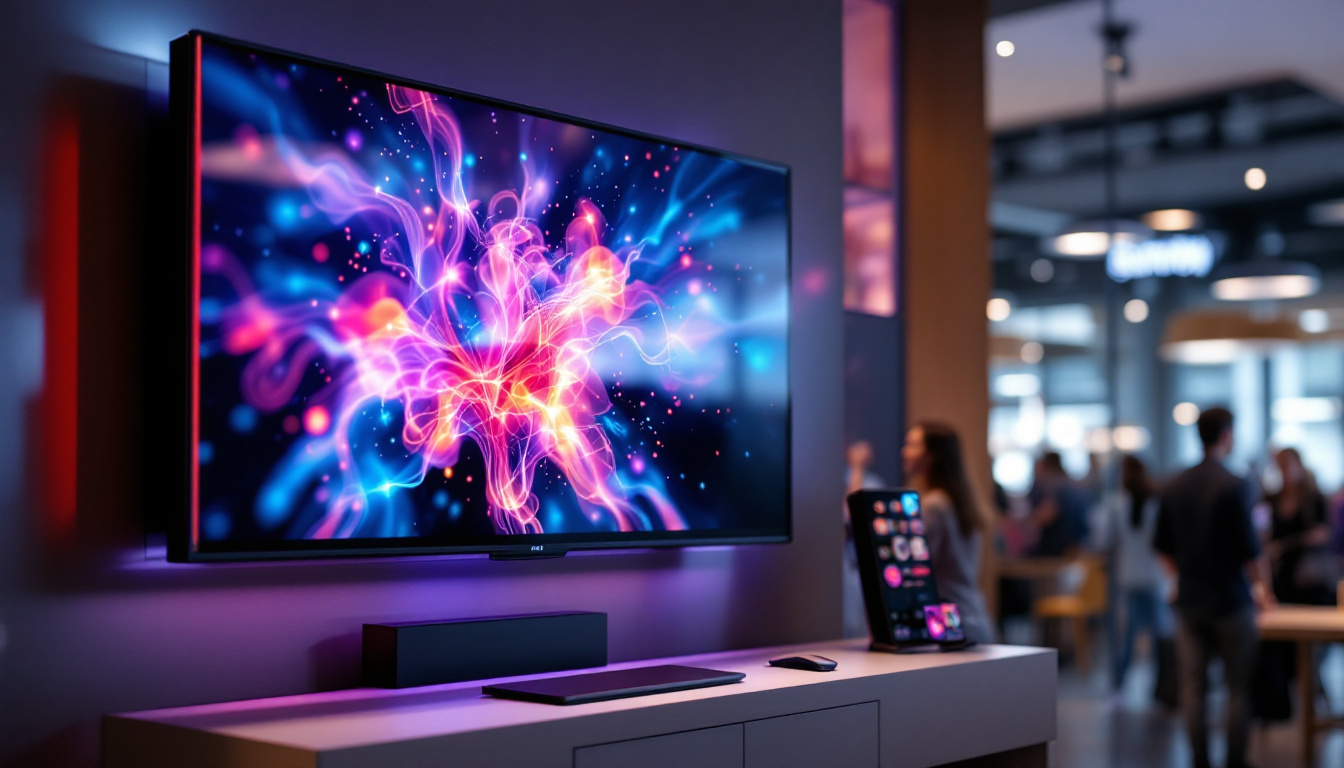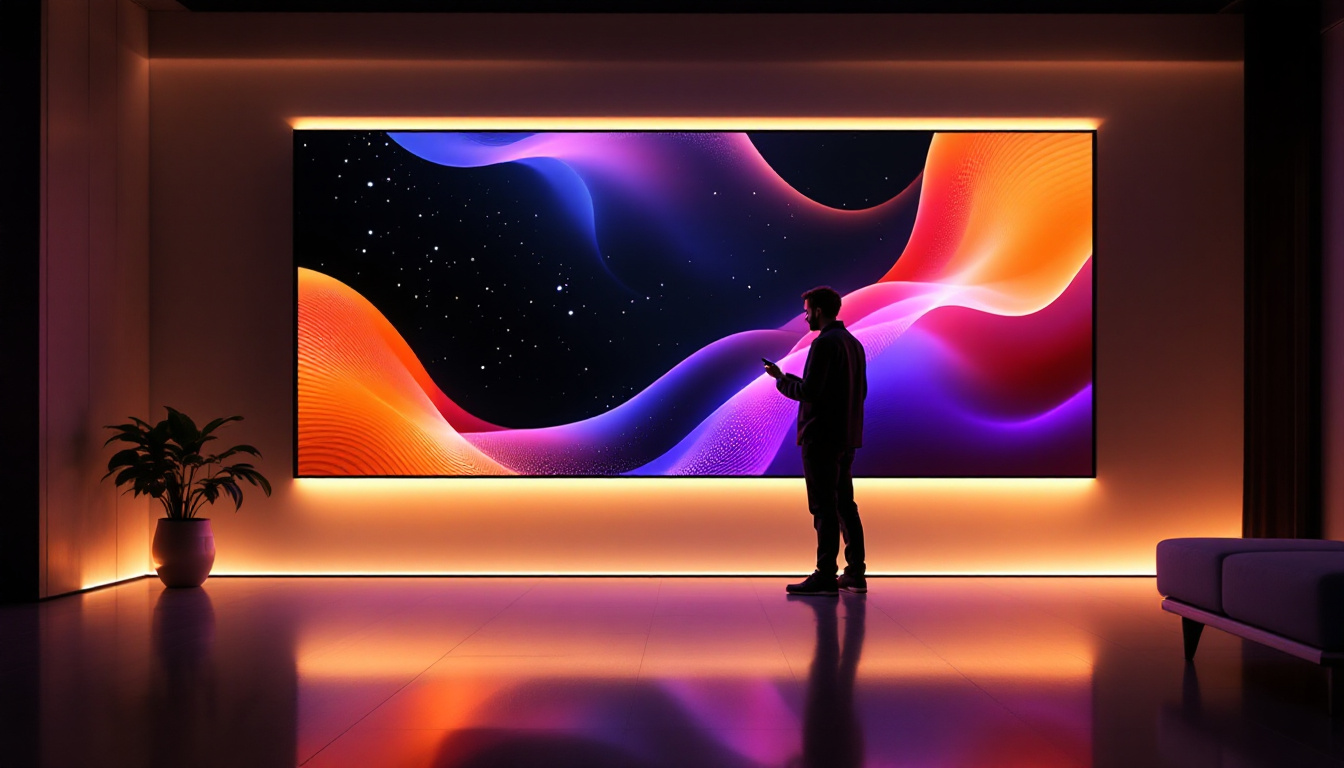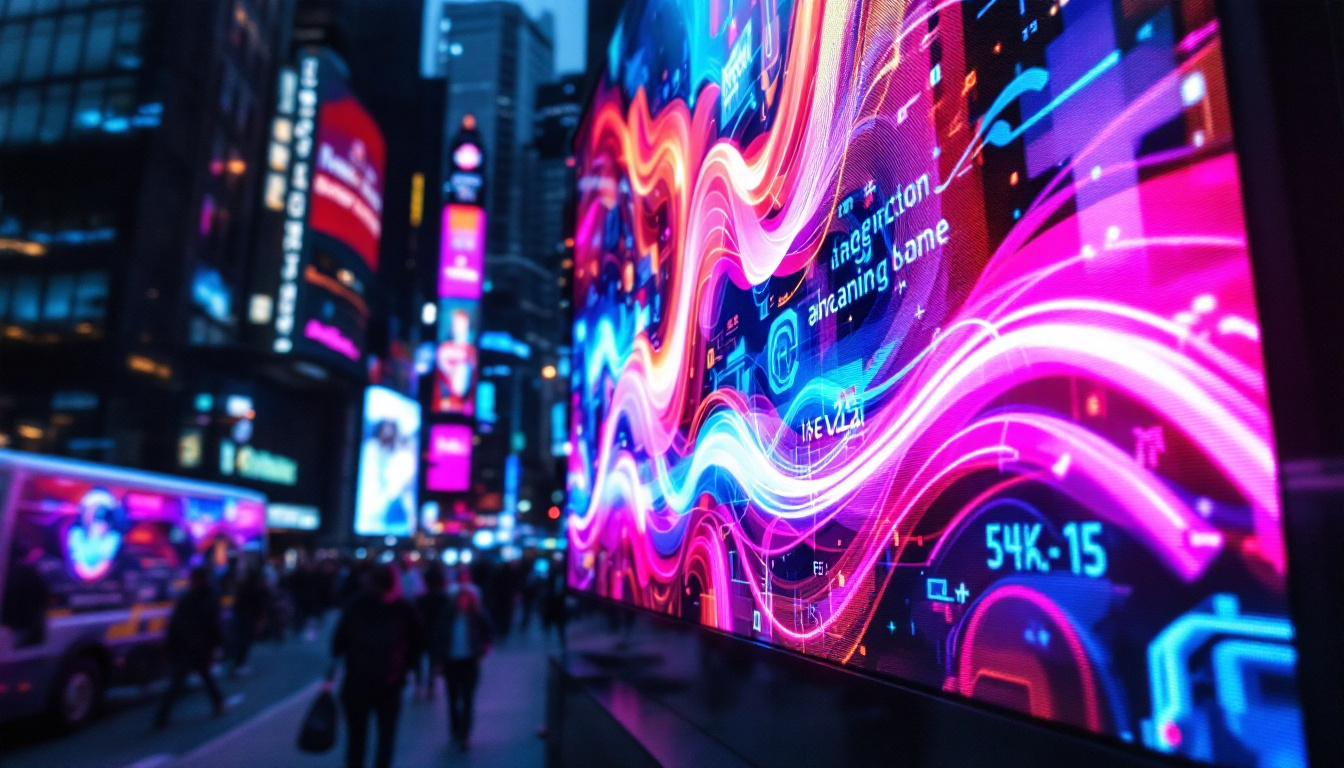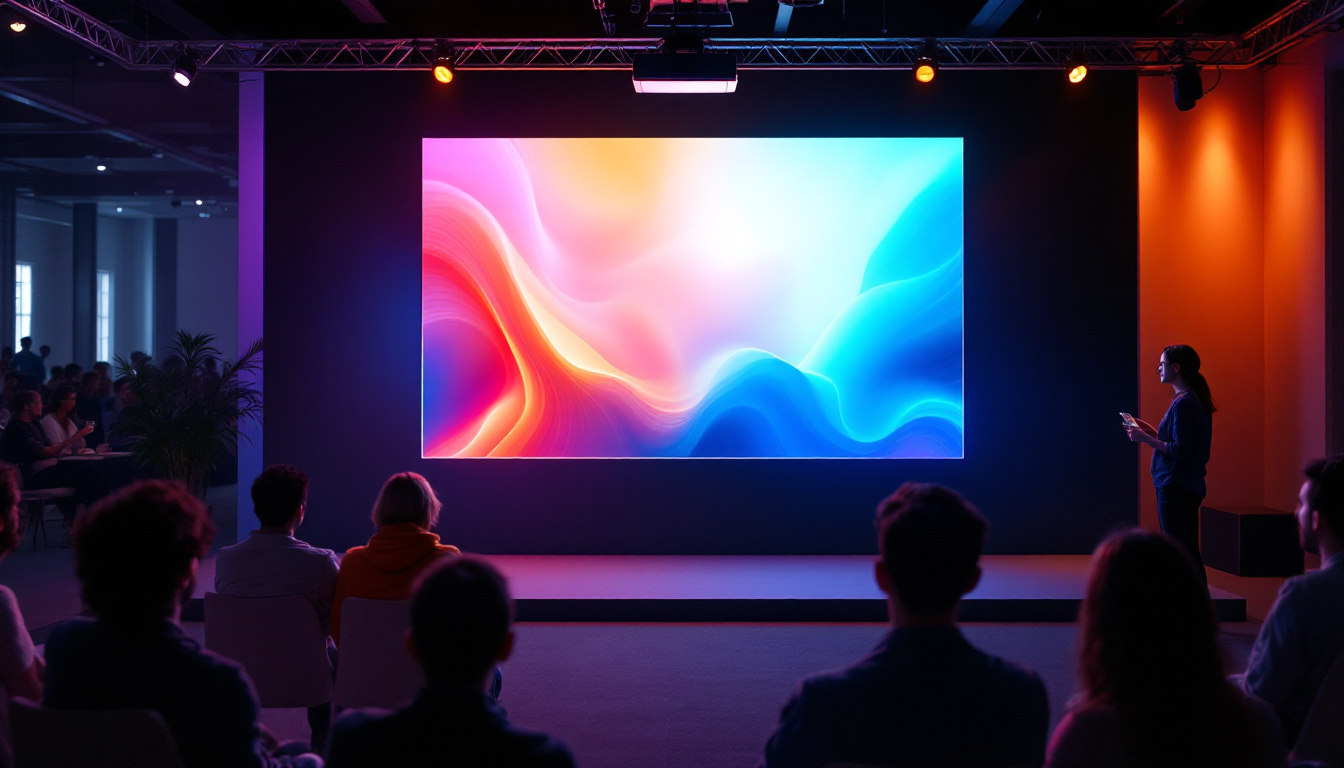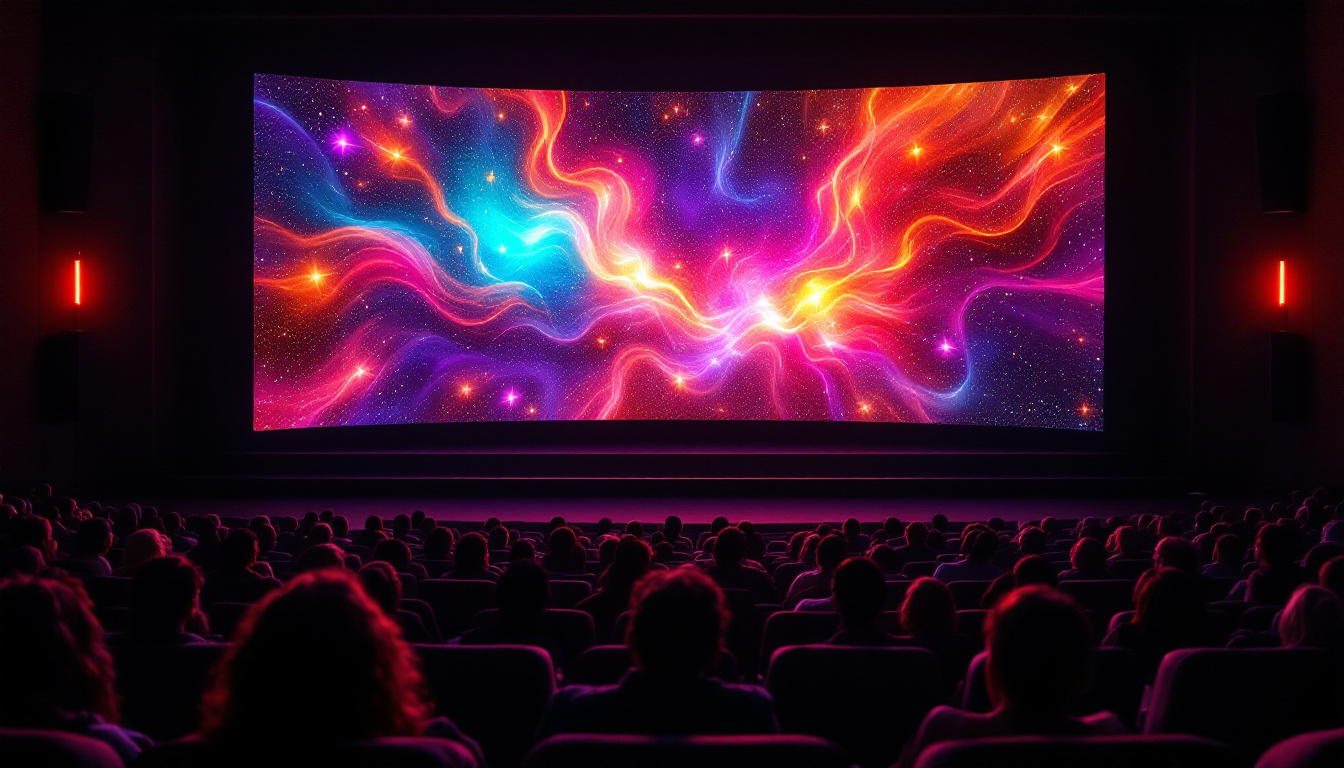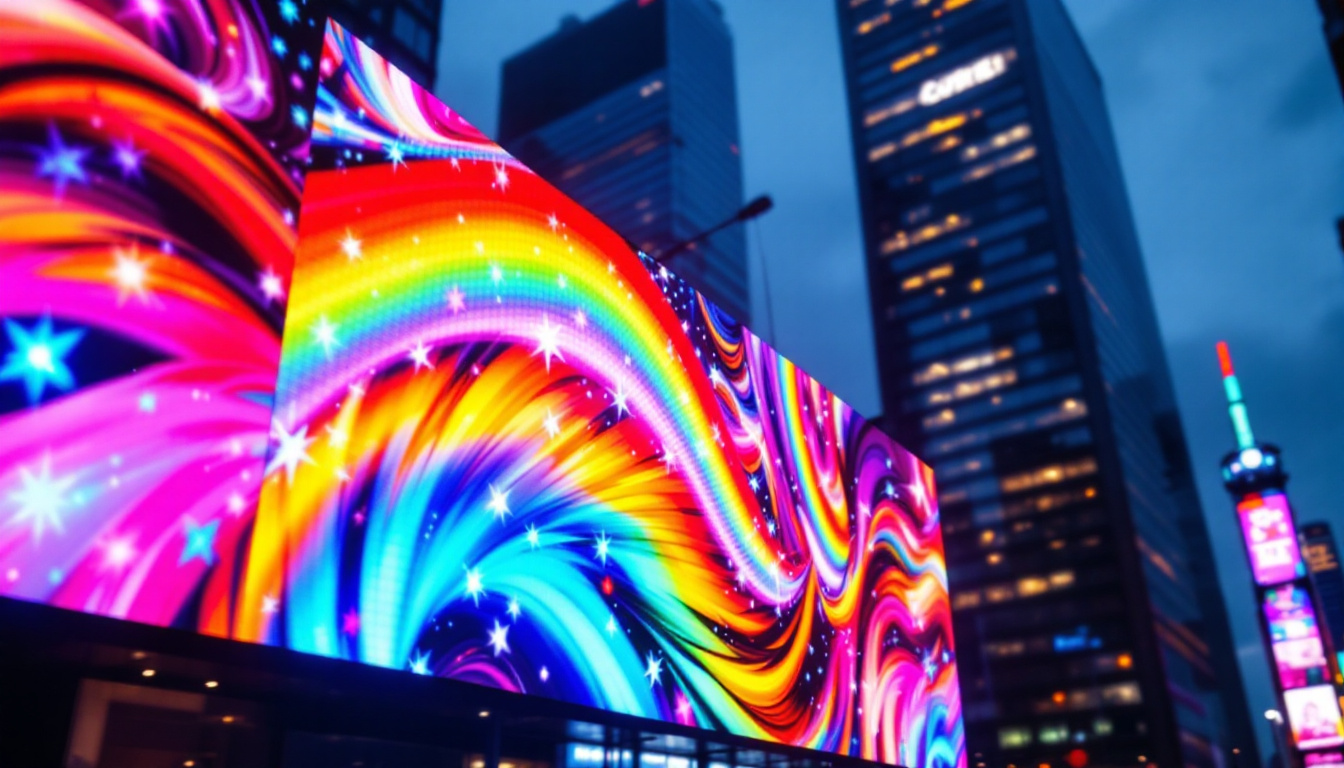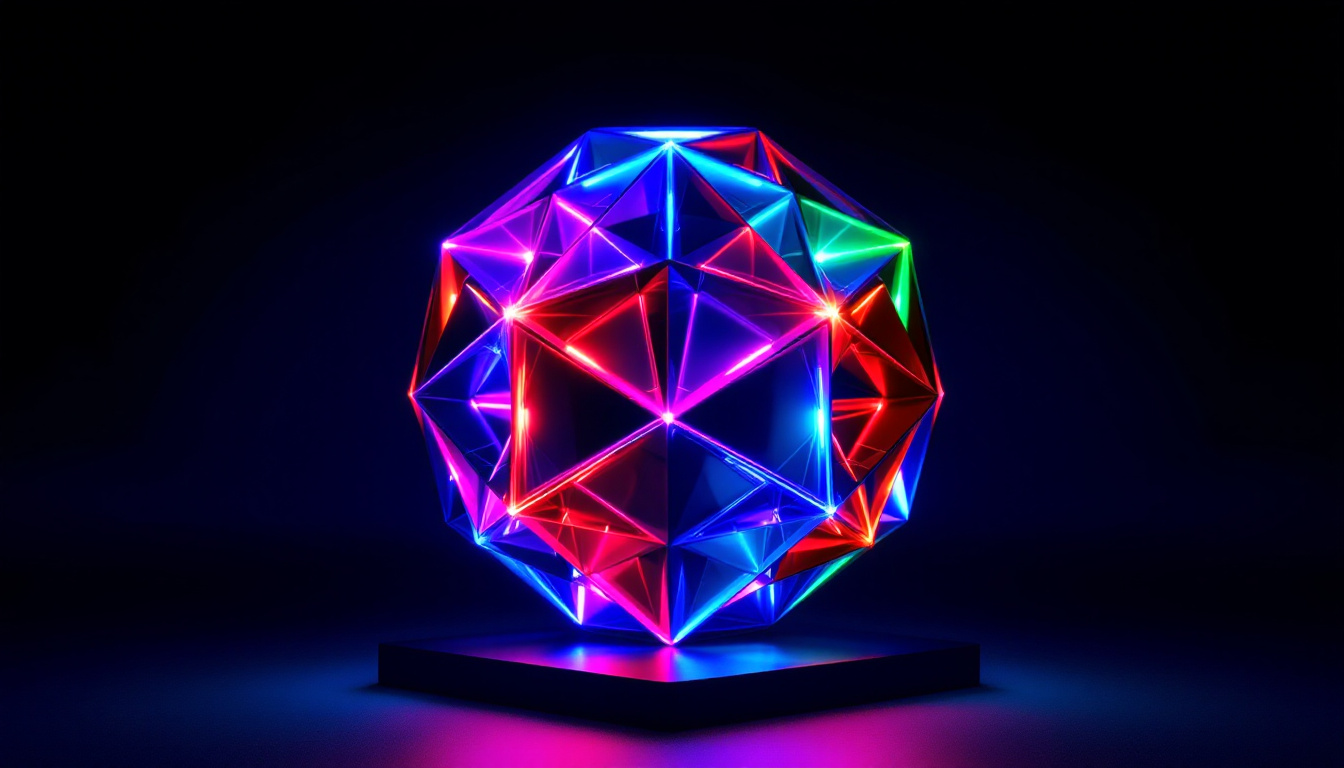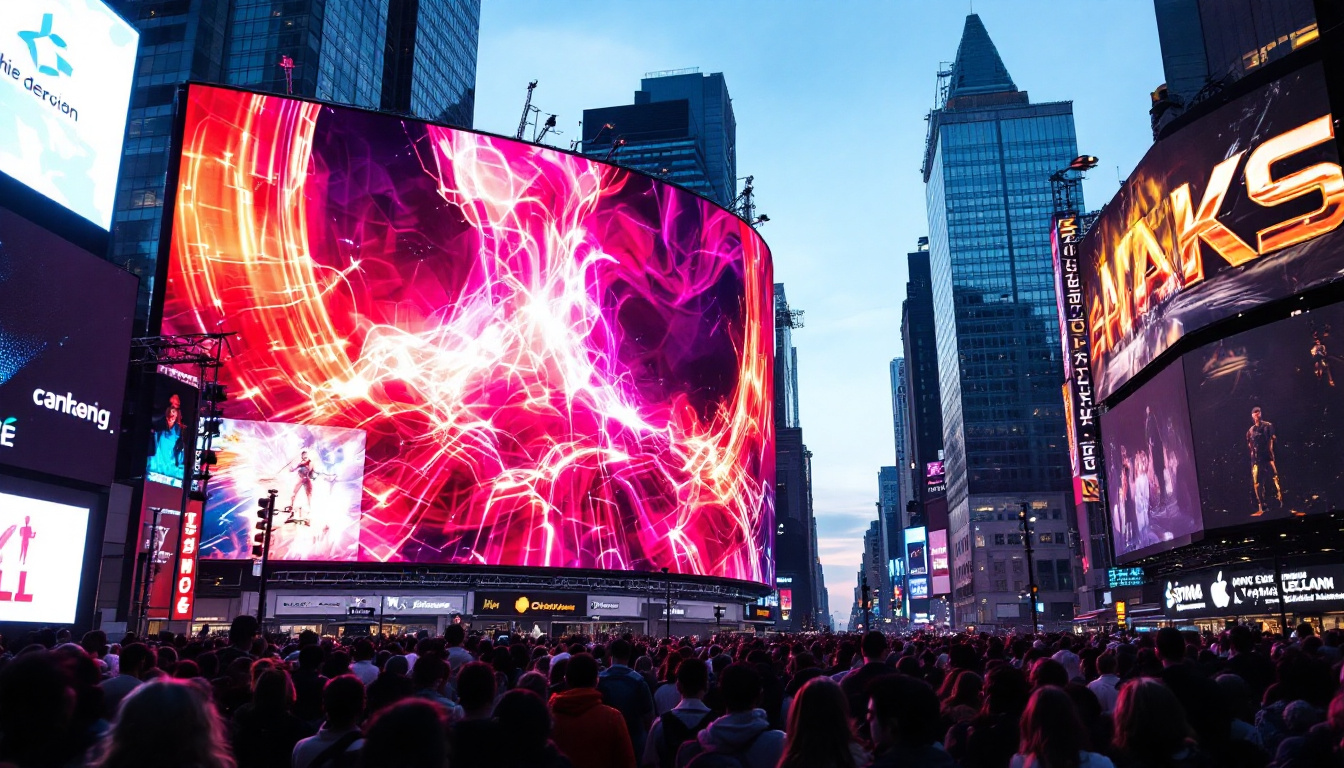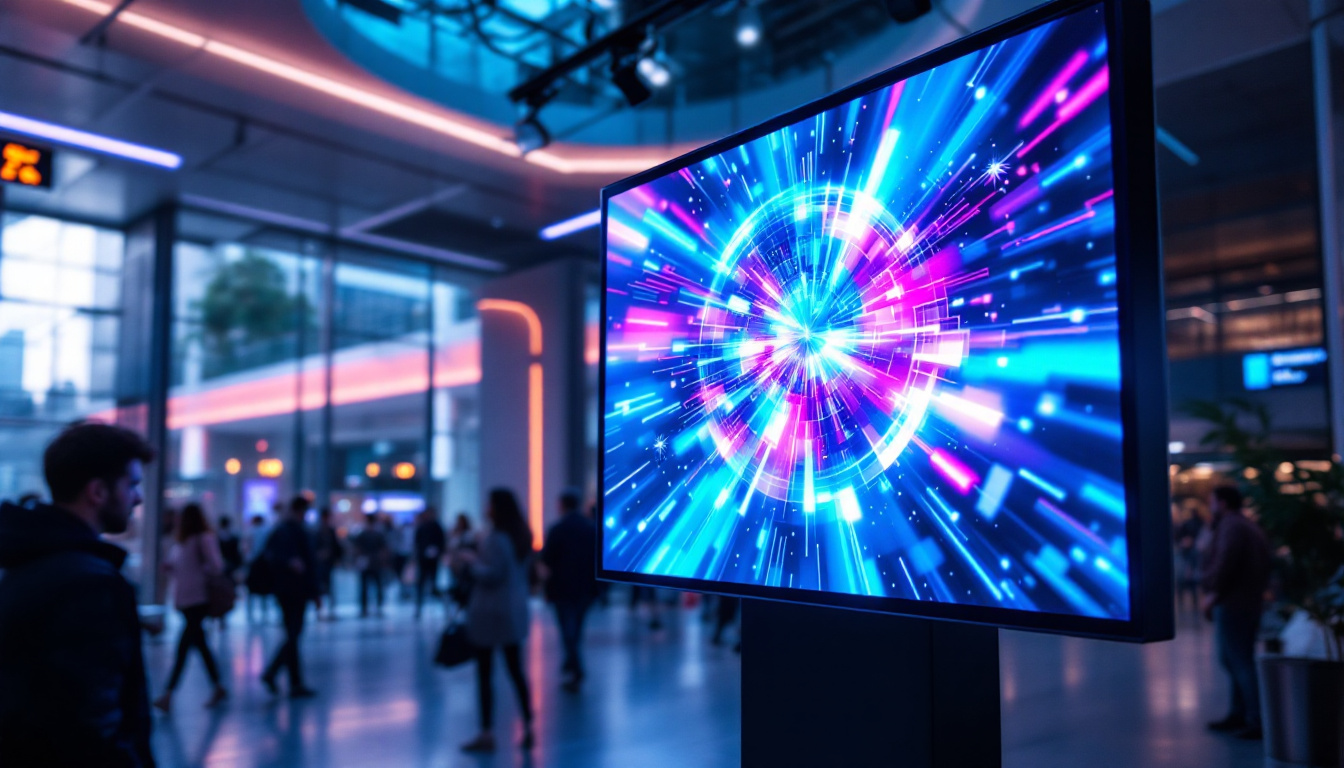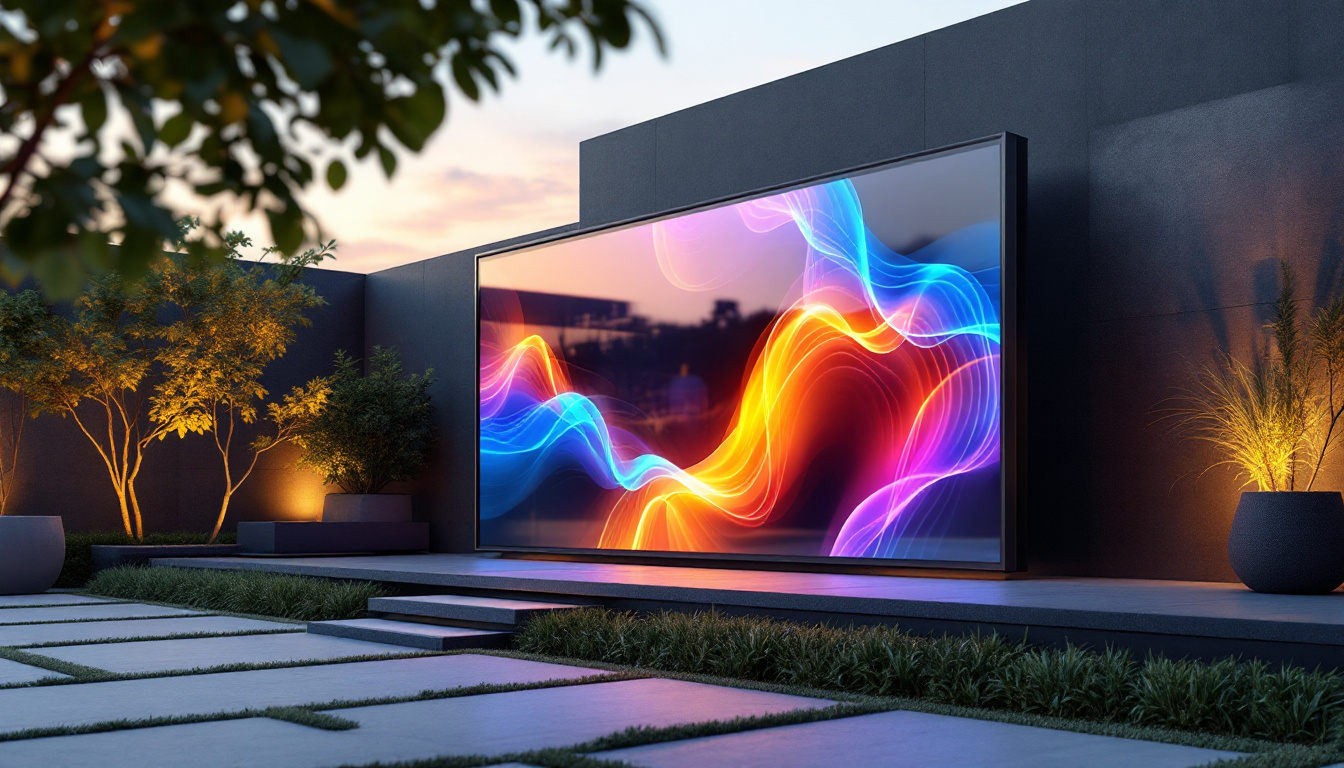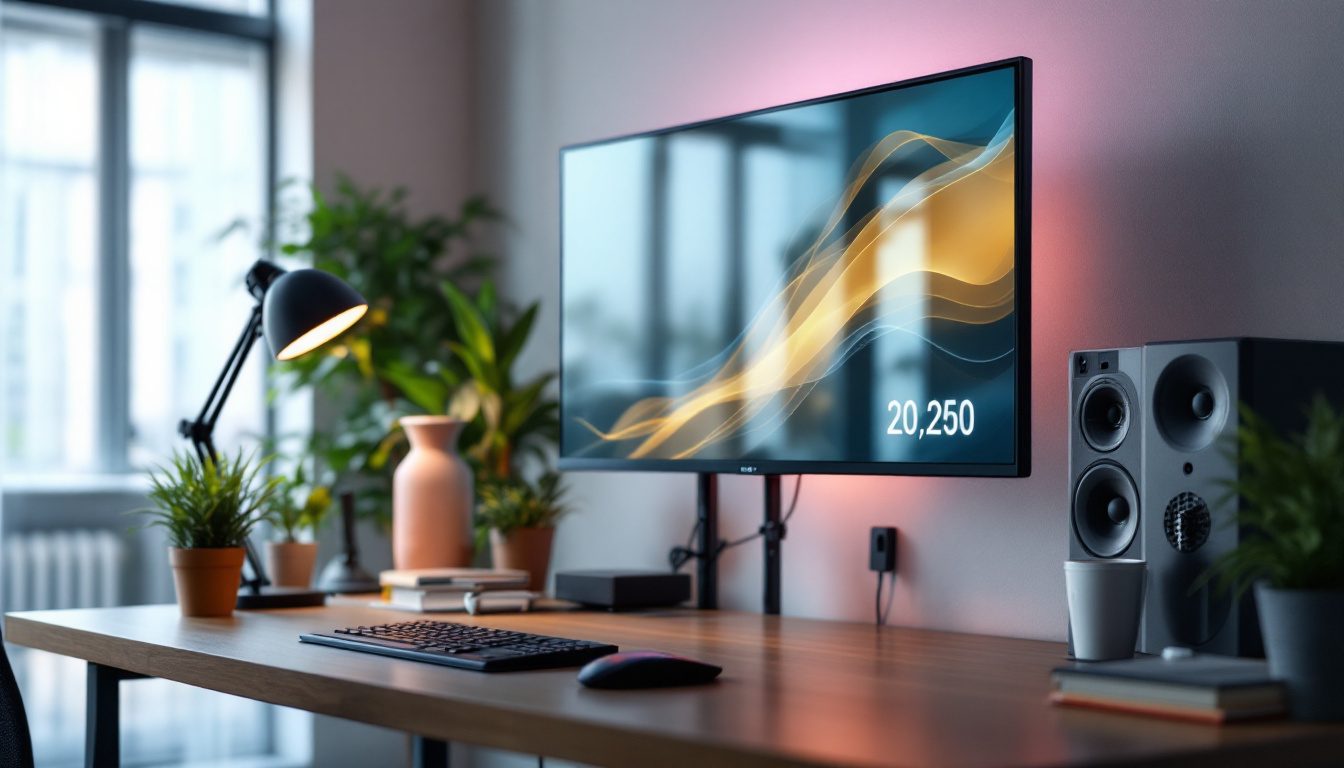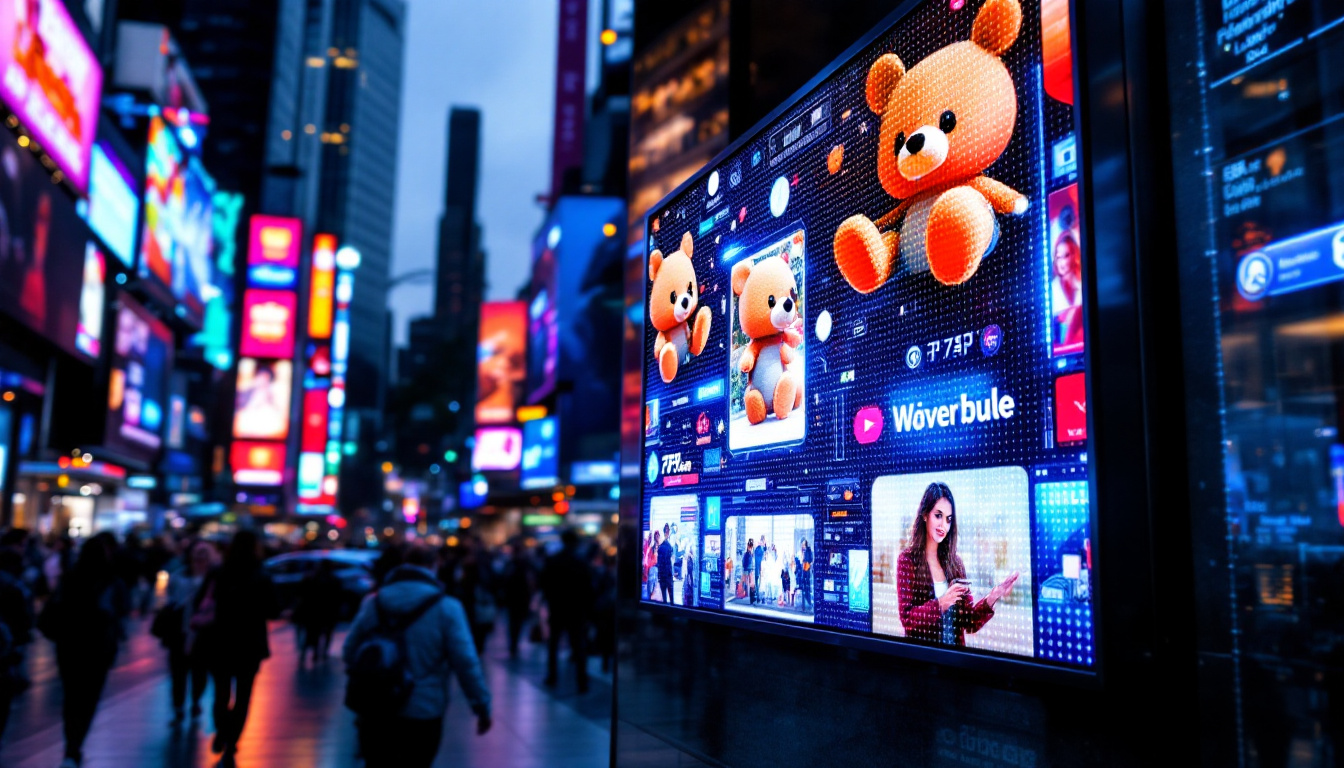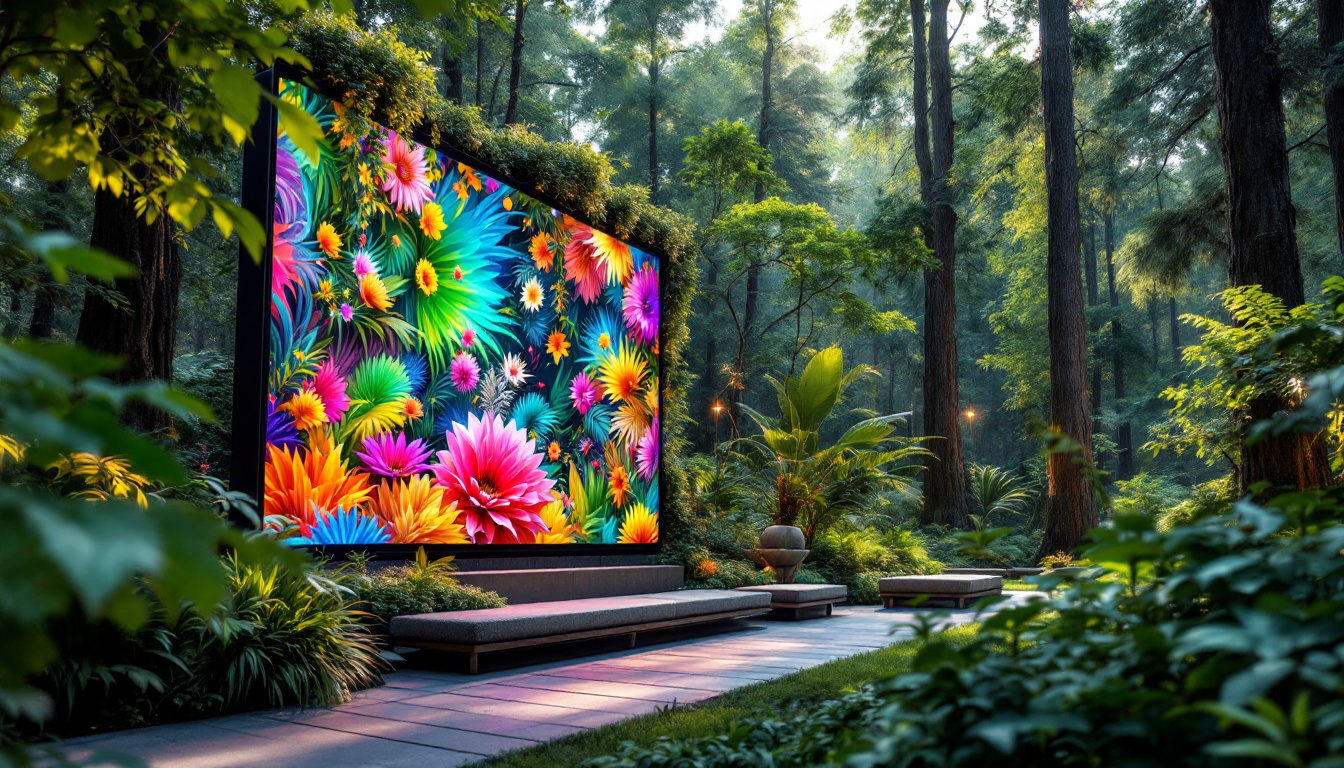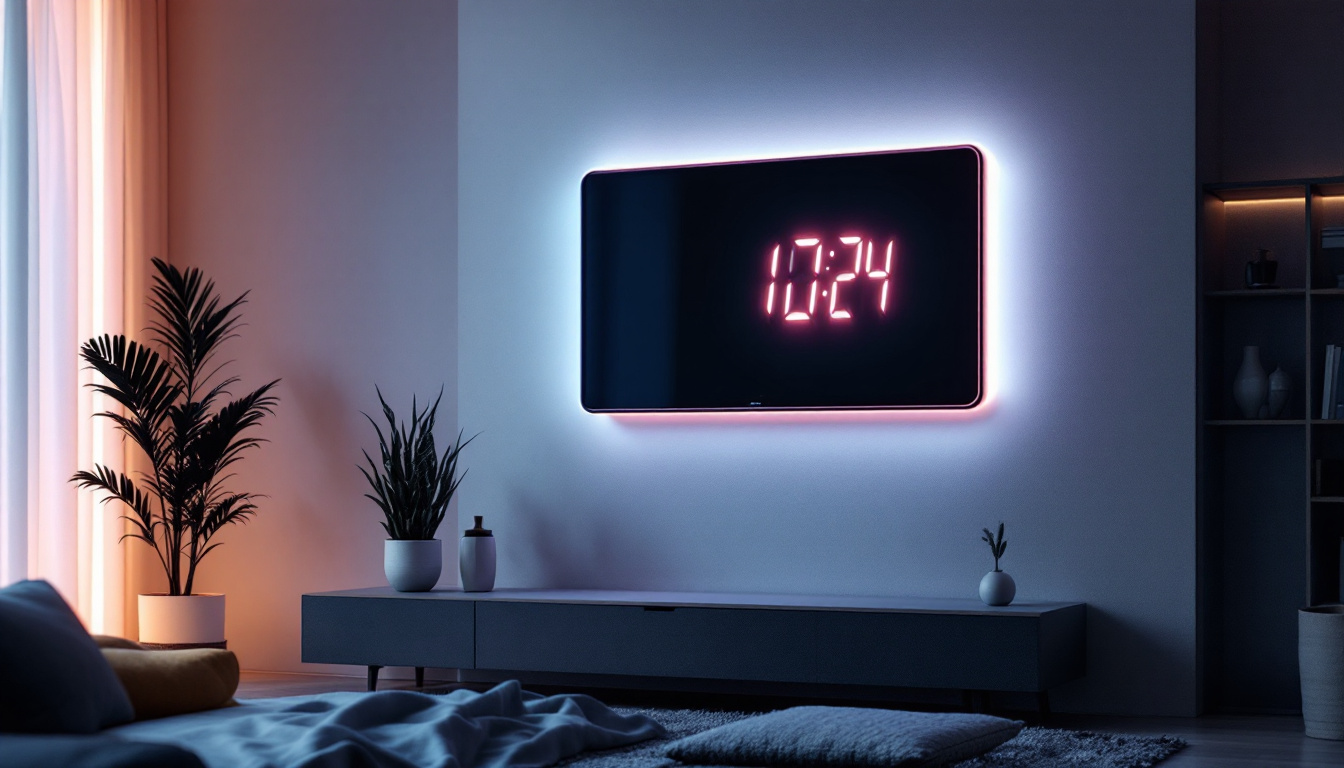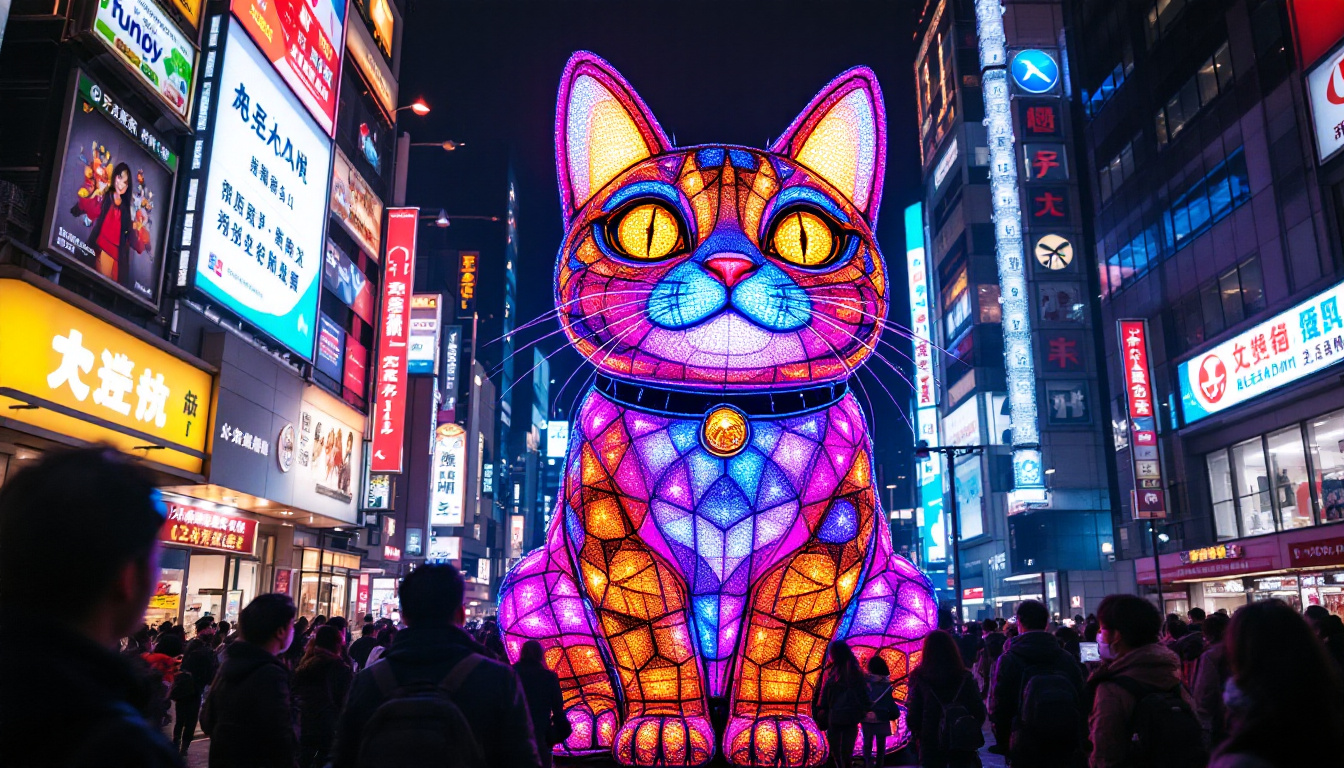Panel TV Wall: LED Display Explained
In recent years, the evolution of display technology has transformed how we experience visual content. Among the various innovations, LED displays have emerged as a popular choice for both residential and commercial applications. This article delves into the intricacies of LED displays, particularly in the context of panel TV walls, exploring their benefits, functionalities, and the technology behind them.
Understanding LED Technology
LED, or Light Emitting Diode, technology has revolutionized the way screens are designed and manufactured. Unlike traditional LCD screens that rely on backlighting, LED displays utilize individual diodes to produce light, resulting in enhanced brightness, contrast, and energy efficiency.
The Basics of LED Displays
At its core, an LED display consists of numerous tiny diodes that emit light when an electric current passes through them. These diodes can be arranged in various configurations, allowing for flexible screen sizes and shapes. The primary advantage of LED technology is its ability to produce vibrant colors and deep blacks, making it ideal for high-definition content.
LED displays can be categorized into two main types: direct view and backlit. Direct view LED displays are composed of individual LED modules that create the image directly, while backlit LED displays use LEDs to illuminate an LCD panel from behind. The former is often used in large-scale installations, such as digital billboards and video walls. This versatility in design allows for creative applications, from massive outdoor advertising screens to sleek indoor displays that enhance the ambiance of a space.
Moreover, the technology behind LED displays has continued to evolve, with advancements such as MicroLED and MiniLED paving the way for even finer pixel densities and improved color accuracy. MicroLED technology, for instance, utilizes microscopic LEDs that can be individually controlled, resulting in exceptional picture quality that rivals OLED displays while maintaining the durability and longevity of traditional LED screens.
Advantages of LED Displays
LED displays offer several benefits that make them a preferred choice for various applications. One of the most significant advantages is their energy efficiency. Compared to traditional display technologies, LED screens consume less power, which can lead to substantial cost savings over time. This efficiency is particularly beneficial in commercial settings, where large displays are in constant use, as it reduces the overall operational costs significantly.
Additionally, LED displays are known for their longevity. With a lifespan that can exceed 100,000 hours, they require less frequent replacements, making them a cost-effective investment for businesses and homeowners alike. Furthermore, their ability to maintain consistent brightness levels over time ensures that the visual experience remains top-notch. This durability is complemented by their resistance to environmental factors, such as temperature fluctuations and humidity, making them suitable for both indoor and outdoor applications. As a result, many industries, including retail, entertainment, and transportation, have embraced LED technology to enhance their visual communications and engage audiences more effectively.
Panel TV Walls: A Modern Display Solution
Panel TV walls have gained immense popularity in both commercial and residential settings. These installations consist of multiple LED panels seamlessly arranged to create a larger display surface. The result is an immersive viewing experience that captivates audiences, whether in a conference room, retail space, or home theater.
Applications of Panel TV Walls
Panel TV walls are versatile and can be employed in various environments. In corporate settings, they serve as effective tools for presentations, video conferencing, and digital signage. The ability to display multiple sources simultaneously allows for dynamic content delivery, enhancing communication and collaboration.
In retail environments, panel TV walls are used to attract customers’ attention and showcase products. High-quality visuals can create a compelling shopping experience, leading to increased sales and customer engagement. Additionally, in entertainment venues, these displays can enhance the overall atmosphere, providing stunning visuals for events and performances.
Design Considerations for Panel TV Walls
When planning a panel TV wall installation, several design considerations come into play. The size and resolution of the display are crucial factors, as they determine the overall visual impact. Larger screens with higher resolutions provide a more immersive experience, but they also require careful consideration of viewing distances and angles.
Another important aspect is the layout of the panels. Seamless integration is essential to create a cohesive visual output. Advanced calibration techniques are often employed to ensure color consistency and brightness across all panels, resulting in a unified display that captivates viewers.
Technical Aspects of LED Panel Walls
Understanding the technical components of LED panel walls is essential for anyone considering this technology. From the modules used to the processing equipment, each element plays a vital role in the overall performance of the display.
LED Modules and Pixel Pitch
LED modules are the building blocks of any LED display. Each module contains a matrix of LEDs that work together to create images. One critical specification to consider is pixel pitch, which refers to the distance between the centers of two adjacent pixels. A smaller pixel pitch results in higher resolution and clarity, making it suitable for close viewing distances.
For instance, a pixel pitch of 1.5mm is ideal for indoor environments where viewers are close to the display, while a pitch of 3mm or more may be appropriate for outdoor applications where viewers are farther away. Selecting the right pixel pitch is crucial for achieving the desired visual quality.
Processing and Control Systems
The processing and control systems are integral to the functionality of LED panel walls. These systems manage the input sources and ensure that the content is displayed correctly across all panels. Advanced processors are capable of handling multiple inputs, allowing for dynamic content switching and real-time adjustments.
Furthermore, control systems facilitate remote management of the display, enabling operators to update content, adjust settings, and troubleshoot issues from a centralized location. This capability is particularly beneficial in commercial settings where displays are used for advertising or information dissemination.
Installation and Maintenance of Panel TV Walls
Installing and maintaining a panel TV wall requires careful planning and execution. Proper installation is critical to ensure optimal performance and longevity of the display. The process typically involves several steps, from site assessment to final calibration.
Installation Process
The installation of a panel TV wall begins with a thorough site assessment to determine the best location and configuration. Factors such as wall structure, electrical requirements, and viewing angles must be considered. Once the design is finalized, the panels are mounted securely, ensuring that they are aligned correctly for a seamless display.
After physical installation, the calibration process begins. This step involves adjusting color settings, brightness, and contrast to achieve a uniform appearance across all panels. Professional calibration services are often recommended to ensure that the display meets industry standards and provides the best possible viewing experience.
Maintenance Best Practices
Regular maintenance is essential to keep a panel TV wall functioning optimally. This includes routine cleaning of the panels to remove dust and debris, which can affect image quality. Additionally, periodic checks of the electrical components and connections can help prevent potential issues.
It is also advisable to keep the software and firmware updated to ensure compatibility with new content sources and to take advantage of the latest features. Establishing a maintenance schedule can help prolong the lifespan of the display and maintain its performance over time.
Future Trends in LED Display Technology
The world of LED display technology is constantly evolving, with new advancements on the horizon. As technology progresses, several trends are emerging that could shape the future of panel TV walls and LED displays in general.
Advancements in Resolution and Color Accuracy
One of the most significant trends is the continuous improvement in resolution and color accuracy. As consumer demand for high-definition content increases, manufacturers are developing displays with higher pixel densities and enhanced color reproduction capabilities. This evolution will lead to even more immersive viewing experiences, particularly in applications such as virtual reality and augmented reality.
Additionally, advancements in color calibration techniques are enabling displays to achieve greater accuracy, ensuring that the colors seen on screen closely match the original content. This is particularly important in industries such as film and photography, where color fidelity is paramount.
Integration with Smart Technologies
Another trend is the integration of LED displays with smart technologies. As the Internet of Things (IoT) continues to expand, LED displays are becoming more connected, allowing for real-time data sharing and interactive content. This integration can enhance user engagement and provide valuable insights for businesses.
For instance, smart LED displays can analyze viewer behavior and adjust content accordingly, creating a more personalized experience. This capability is particularly beneficial in retail environments, where targeted advertising can significantly impact sales.
Conclusion
Panel TV walls utilizing LED display technology represent a significant advancement in visual communication. With their numerous advantages, including energy efficiency, longevity, and superior image quality, they have become a staple in both commercial and residential settings.
As technology continues to evolve, the future of LED displays looks promising, with advancements in resolution, color accuracy, and smart integration on the horizon. Whether used for presentations, advertising, or entertainment, panel TV walls are poised to remain at the forefront of visual display technology for years to come.
Investing in a panel TV wall can transform the way content is experienced, creating immersive environments that captivate audiences and enhance communication. As the demand for high-quality visual displays grows, understanding the technology behind LED displays will be essential for making informed decisions in this dynamic market.
Discover LumenMatrix’s Advanced LED Display Solutions
Ready to elevate your visual experience with the latest in LED technology? LumenMatrix offers a comprehensive range of cutting-edge LED display modules tailored to your needs. From vibrant Indoor LED Wall Displays to dynamic Outdoor LED Wall Displays, and from mobile Vehicle LED Displays to interactive Floor LED Displays, our solutions are designed to captivate and engage. Embrace the future of visual communication with our Custom, All-in-One, and Transparent LED Displays, each crafted to deliver unparalleled clarity and impact. Check out LumenMatrix LED Display Solutions today and transform your space into a mesmerizing visual journey.

